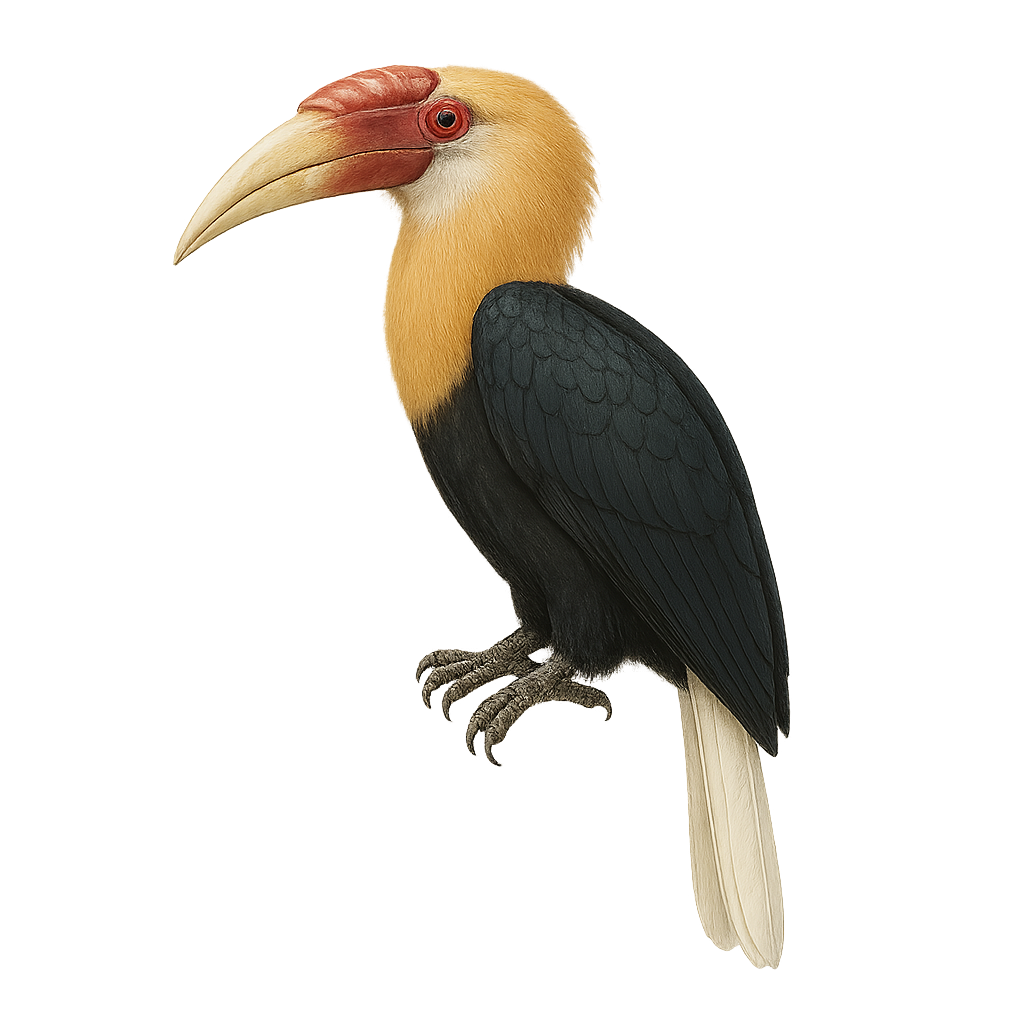Your wildlife photography guide.
Explore the plain-pouched hornbill in detail, study its behavior, prepare your shots.
Where to observe and photograph the plain-pouched hornbill in the wild
Learn where and when to spot the plain-pouched hornbill in the wild, how to identify the species based on distinctive features, and what natural environments it inhabits. The WildlifePhotographer app offers tailored photography tips that reflect the plain-pouched hornbill’s behavior, helping you capture better wildlife images. Explore the full species profile for key information including description, habitat, active periods, and approach techniques.
Plain-pouched Hornbill
Scientific name: Rhyticeros subruficollis

IUCN Status: Vulnerable
Family: BUCEROTIDAE
Group: Birds
Sensitivity to human approach: Suspicious
Minimum approach distance: 10 m
Courtship display: March to April
Incubation: 38-40 jours
Hatchings: April to June
Habitat:
Tropical forests, subtropical forests, wooded areas
Activity period :
Primarily active during the day, with peak activity in the morning and late afternoon.
Identification and description:
The Plain-pouched Hornbill, or Rhyticeros subruficollis, is a large and rare hornbill found in the tropical forests of Southeast Asia, mainly in southern Myanmar and the Malay Peninsula. It is recognized by its black body, pale orange-beige throat and chest, and large ivory bill topped with a rounded black casque. Males show a more intensely colored throat than females. This species inhabits lowland rainforests, especially near river valleys, and feeds on fruits, insects, and small vertebrates. Due to habitat destruction, the Plain-pouched Hornbill is classified as Endangered.
Recommended lens:
400mm – adjust based on distance, desired framing (portrait or habitat), and approach conditions.
Photography tips:
To photograph the Plain-pouched Hornbill, it's advisable to use a telephoto lens of at least 400mm to capture detailed images from a distance. Look for areas where these birds feed or rest, usually in dense forests. Be patient and discreet to avoid scaring them away. The best times to observe them are early in the morning or late afternoon when the natural light is soft and flattering.
The WildlifePhotographer App is coming soon!
Be the first to explore the best nature spots, track rutting seasons, log your observations, and observe more wildlife.
Already 1 439 wildlife lovers subscribed worldwide

